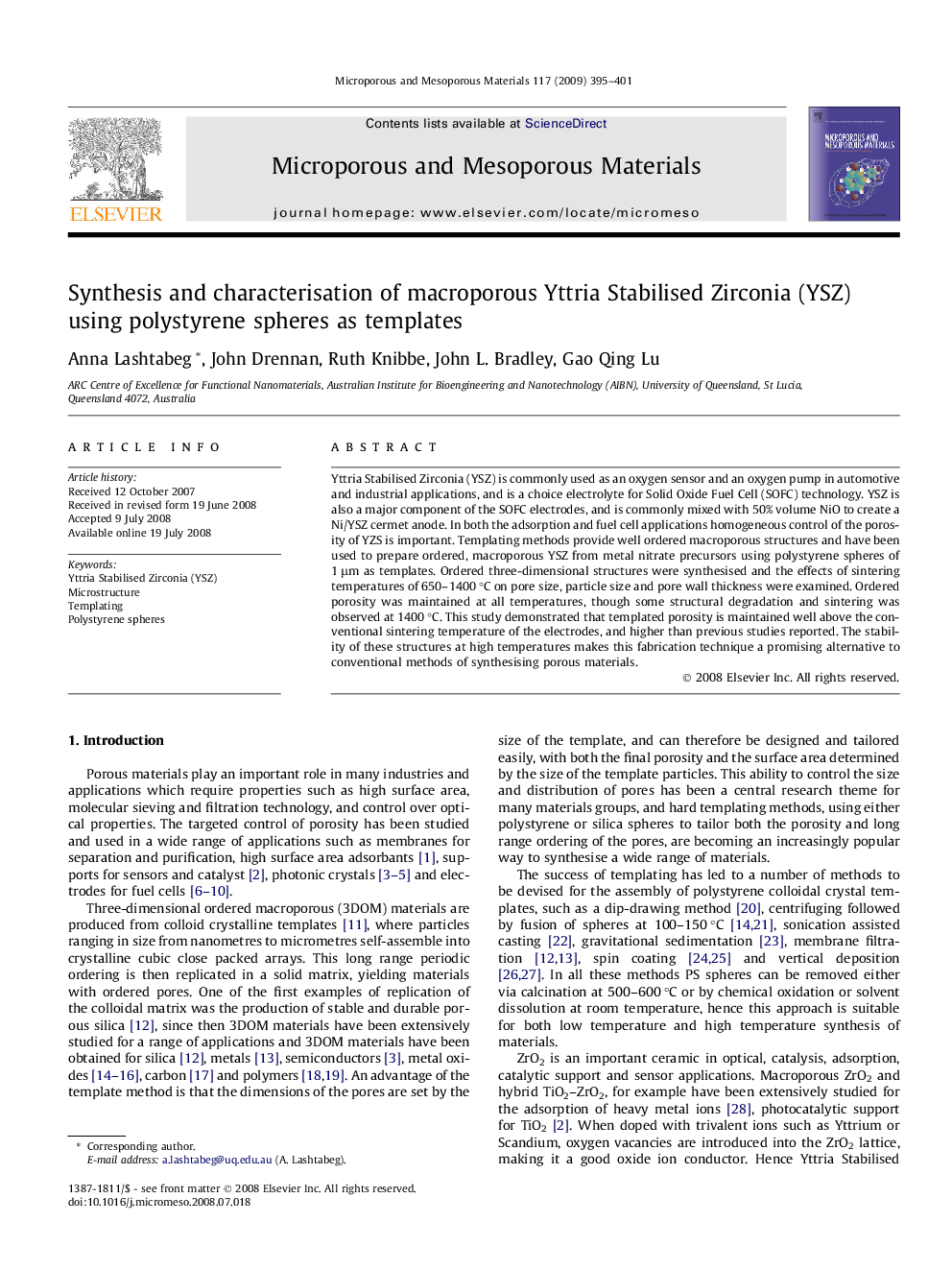| کد مقاله | کد نشریه | سال انتشار | مقاله انگلیسی | نسخه تمام متن |
|---|---|---|---|---|
| 75355 | 49113 | 2009 | 7 صفحه PDF | دانلود رایگان |

Yttria Stabilised Zirconia (YSZ) is commonly used as an oxygen sensor and an oxygen pump in automotive and industrial applications, and is a choice electrolyte for Solid Oxide Fuel Cell (SOFC) technology. YSZ is also a major component of the SOFC electrodes, and is commonly mixed with 50% volume NiO to create a Ni/YSZ cermet anode. In both the adsorption and fuel cell applications homogeneous control of the porosity of YZS is important. Templating methods provide well ordered macroporous structures and have been used to prepare ordered, macroporous YSZ from metal nitrate precursors using polystyrene spheres of 1 μm as templates. Ordered three-dimensional structures were synthesised and the effects of sintering temperatures of 650–1400 °C on pore size, particle size and pore wall thickness were examined. Ordered porosity was maintained at all temperatures, though some structural degradation and sintering was observed at 1400 °C. This study demonstrated that templated porosity is maintained well above the conventional sintering temperature of the electrodes, and higher than previous studies reported. The stability of these structures at high temperatures makes this fabrication technique a promising alternative to conventional methods of synthesising porous materials.
Journal: Microporous and Mesoporous Materials - Volume 117, Issues 1–2, 1 January 2009, Pages 395–401